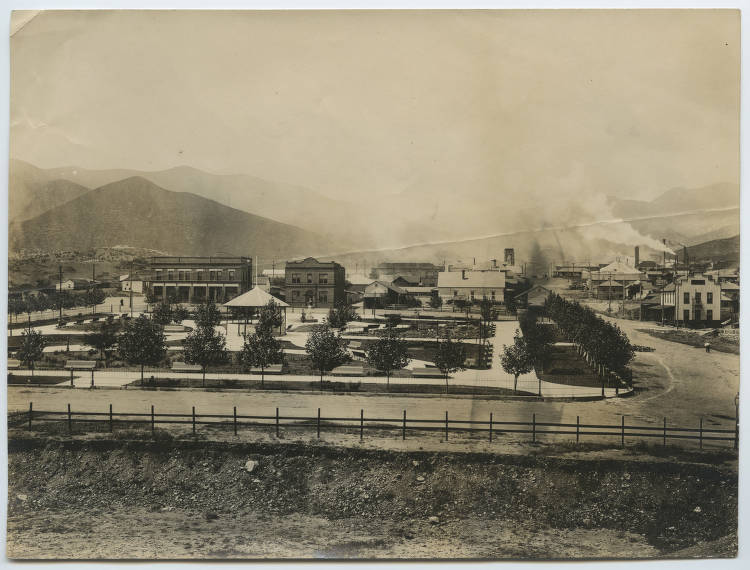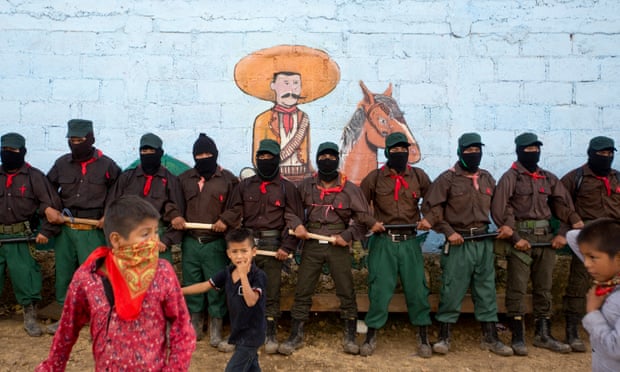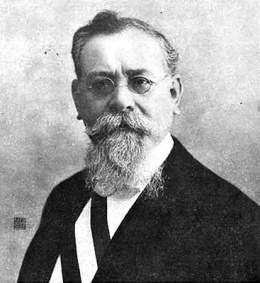The Mexican Revolution (1910-1940) was a complex series of revolutions, political coups, social movements, counterrevolutions, and reactionary civil insurgencies. The Mexican Revolution did not mirror the mostly clean-cut victory of their neighbor to the north in 1776. The Revolution in Mexico was unique in that it involved multiple classes with different causes.This was evidenced early on during the revolutionary leadership of
Francisco I. Madero and his tumultous presidency.
"Only in Mexico did small land owners, landless peasants, factory workers, miners, members of the middle class (government bureaucrats, small-business owners, small-scale merchants), and dissident elites form a multi-class alliance that overthrew an exitising regime dominated by a small ruling class" (Wasserman 2).
Sometimes the disparate social groups, that Ristow calls "a patchwork revolutionary coalition"(1) united for one purpose: overthrowing whoever was in charge, and soon after splintered into rival factions. All the while the nation hung in the precarious balance.
The Unlikely Voice of the Masses
 |
| Madero |
Francisco Madero, from one of the most prominent and wealthy families in northern Mexico, rose to top to lead the disgruntled masses against Porfirio Diaz's regime. His family's industries were taking a financial hit because of Diaz's preferetial treatment to foreign companies (Gonzales 49). Madero was embraced by the middle class and common people because he linked his cause to theirs--one of discontentment with the Porfiriato. This was significant because this odd partnership of lower classes and middle/upper classes provided legitimacy to revolt. Lower classes felt that they finally had the ability to make their mark, something that was not possible without a cross-class coalition.
But once he had toppled the regime, his ideology of fair treatment of indigeneous people, securing workers' rights, and attempting to redistribute land to its rightful owners, was dismissed in favor of political scheming to bolser his middle class supporters and his own soci-economic class, the elites. Once he won the election (from place holder Francisco Leon de la Barra), he barely made any changes to Diaz's regime.
Revolutionary Democracy on Shaky Ground
"The radicals had won the battles, but the moderates took the spoils" (qtd. in Ristow 134).
In the North---Pascual Orozco, the former Madero general, was left out of President Madero's inner circle (Wasserman 11). This political affront caused an early rift in Madero's presidency. Add to the political fray, continued social unrest and the new Madero government was already on shaky ground. Agrarian workers and miners were still unhappy. Indians, treated horribly by Diaz and key contributors in the Revolutionary armed conflicts, found little improvement under Madero.
.jpg/798px-A_group_of_Yaqui_Indians_at_the_surrender_and_signing_of_peace_treaty_at_Ortiz%2C_Mexico%2C_ca.1910_(CHS-2523).jpg) |
| Indian Revolutionaries |
In the South--In Morelos, Emiliano Zapata, a fierce fighter in the Revolution, gathered supporters in order to push Madero to act on the promises Madero made in his Plan of San Luis Potosi regarding the restoration of lands that the Diaz regime had taken from small landholders and the general public.To Zapata, this was not happen-
 |
| Zapata |
ing fast enough. Madero had little interest in the lower class issues that he professed during the Revolution and preferred that the courts take care of land disputes.This was a drawn-out process that Zapatistas had no patience for. Zapata demanded that the "promises of the Revolution be fulfilled" (qtd. in Gonzales 84). The people of Mexico had different expectations than Madero.
Further South-- Che Gomez in Juchitan, embodied Mexico during the early stages of Revolutionary democracy. There was a split between the Madero moderates and the radical popular revolutionaries (Ristow 119). The Revolution was barely finished--in fact, there were still skirmishes after Diaz had been disposed. Unrest in the countryside was a serious problem for Madero. Class divisions (barrio alta and barrio abajo) were deeply rooted since colonial times and further entrenched during the Porfiriato. There also was a schism of race that Madero had to deal with. In Juchitan, indigenous people wanted local representation and rights--they wanted to be governed by popular will. They were led by Jose Che Gomez. In Mexico City, people and the press called them "unconscious multitudes" (Ristow 23). Because they were a marginalized group, Chegomistas stood up to the federal troops of President Elect De La Barra and President Madero in the
ways they knew how: basic insurgency that disrupted the
Political infighting between Madero and Vasquez Gomez brothers, Fransicso and Emilio, gave room for the Chegomistas to stand their ground. In fact, Vazquez Gomez may have supplied the Chegomistas with arms (Ristow 121). Even though theirs was a local fight for "a sovereign pueblo," Chegomistas were a threat to national cohesion in Madero's eyes. Madero used federal troops to quell uprising and in doing so, defined the limits of the revolutionary democracy. To what length would popular will be tolerated? Could the Mexican people coalesce or would they keep their allegiances to "personalist leaders" (Ristow 229). In just the first days of his presidency, Madero was forced to lay bare his ideology. It was this: local rule could be a danger to national peace and prosperity.
The Beginning was the End
The first days of Madero's presidency were significant, because Mexico could have fallen into another civil war, the nation was being re-defined from within, and Madero's response revealed his true obligations could not abide the popular will. The issues in the North and South also demonstrated the ethnic and class divisions and the myriad of socio-economic and political goals that one revolution may not have been able to accomplish. In a way, more revolutions were playing out because of that. There was not one revolution but many, all trying to fulfill disparate goals. Madero's inability and unwillingness to address these would spell the end for him.






:max_bytes(150000):strip_icc()/pancho-villa-on-presidential-chair-during-revolution-of-1914-in-national-palace-in-mexico-city--zapata-is-at-left--mexico--20th-century-153415896-59ef75efc412440011bfd3af.jpg)



.jpg/798px-A_group_of_Yaqui_Indians_at_the_surrender_and_signing_of_peace_treaty_at_Ortiz%2C_Mexico%2C_ca.1910_(CHS-2523).jpg)
